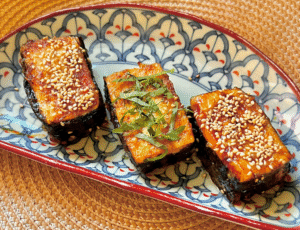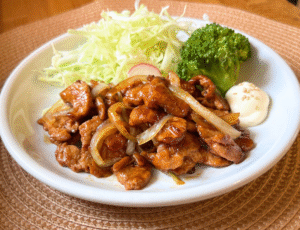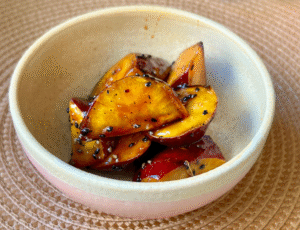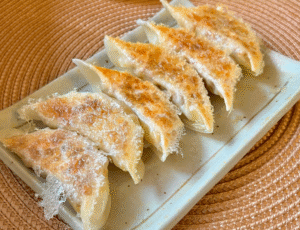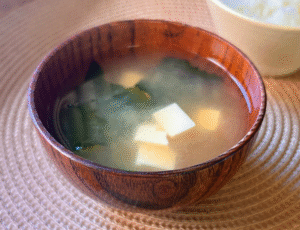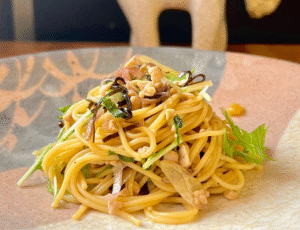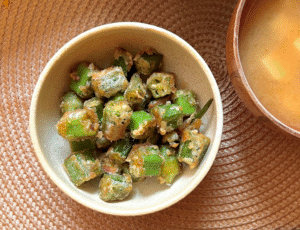Vegan tempura is a light and crispy Japanese dish made with seasonal vegetables.
Pumpkin, eggplant, and sweet potatoes turn simple ingredients into something special.
Many store-bought tempura mixes contain egg, so making it from scratch is a great option.
With only plant-based ingredients, you can still enjoy a delicious and satisfying crunch!
Ingredients
- 5 tablespoons of wheat flour
- 6-8 tablespoons of cold water/cold sparkling water (adjust as needed for texture)
→ The batter should look like in the video - Your favorites vegetables
※Ingredients for About 10 Pieces of Tempura
Instructions
- Cut the vegetables into bite-sized pieces.
- Lightly coat the vegetables with flour.
- Dip them into the batter.
- Fry until golden and crispy.
VIDEO: Watch How to Make It
https://www.instagram.com/p/DPWOHG6DEhK
Tempura Tips for the Perfect Crispy Batter
Tip ① Don’t overmix the batter
Overmixing develops gluten in the flour. Gluten makes the batter chewy or heavy instead of light.
Mix the flour and water gently with chopsticks or a fork. It’s okay if small lumps remain—they actually help keep the coating airy.
Tip A: Sift the flour first
If you sift the flour through a strainer before mixing, the flour becomes more even and large lumps are less likely to form.
Tip B: Don’t overmix
Tempura batter is meant to have small lumps. Trying to make it perfectly smooth will develop gluten, which makes the coating heavy instead of light and crispy.
Tip C: If the look bothers you
Just break up the large lumps gently. Small lumps are totally fine—they actually fry into crispy little spots that add texture.
Tip ② Always use cold water
Cold water slows down gluten formation, keeping the batter light and crisp.
Use chilled water, or even add ice cubes directly into the bowl. Keep the batter cold until frying for the best results.
Tip ③ Try sparkling water
Carbon dioxide bubbles in sparkling water expand when frying, creating a delicate airy texture.
This makes the coating thinner and crispier—perfect for delicate vegetables like shiso leaves.
Tip ④ Add a little baking powder
Baking powder releases gas as it heats, making the batter expand slightly.
This gives the tempura a crispier, fluffier coating. Use sparingly (about 1/4 tsp per 1/2 cup flour).
Tip ⑤ Dust vegetables with flour first
Lightly coating vegetables with flour helps the batter stick evenly.
Without this step, the batter may slide off when frying.
Tip ⑥ Maintain the right oil temperature (170–180°C / 340–355°F)
Too hot, and the batter burns before the inside cooks. Too cool, and it becomes greasy.
Drop a little batter into the oil—if it sinks halfway and rises quickly with bubbles, the temperature is just right.
Tip ⑦ Fry in small batches
Adding too many pieces lowers the oil temperature.
Fry just a few at a time to keep every piece light and crispy.
Tip ⑧ Serve immediately
Tempura tastes best right after frying while still crisp.
If you need to keep it warm, place on a wire rack in a 100°C (210°F) oven instead of stacking to preserve crispiness.
Tip ⑨ Choose the right oil
Light oils like vegetable, canola, or rice bran oil work best for tempura.
You can also add a small amount of sesame oil to the frying oil for extra aroma and flavor.
Tip ⑩ Prepare vegetables properly
Make sure vegetables are dry before dipping into the batter.
Moisture causes splattering and soggy tempura. Cut thicker vegetables (like pumpkin or sweet potato) into thin slices or score them with small cuts so they cook evenly.
Tip ⑪ Make batter in small portions
Tempura batter should be mixed fresh and used right away.
If it sits too long, the cold temperature is lost and gluten develops, making the batter heavy. Prepare only what you’ll use in one batch.
Tip ⑫ Skim the oil & fry in order
Use a slotted spoon to remove crumbs (tenkasu) from the oil while frying.
This keeps the oil clean and prevents burnt flavors. Start with light-tasting vegetables, then move to stronger-flavored items last.
Tip ⑬ How to serve tempura
Tempura tastes amazing with just a sprinkle of salt.
If you prefer dipping sauce, dip lightly so the coating stays crisp. Serving tempura on a wire rack instead of a plate also helps keep it crunchy.
Tip ⑭ Use leftovers for kakiage
Don’t waste leftover batter or small vegetable pieces. Combine them and fry together to make kakiage, a delicious type of mixed tempura.It reduces food waste and gives you one more tasty dish!
Bonus Tip: Using Rice Flour for Tempura
Bonus Tip① Less worry about overmixing
Rice flour doesn’t contain gluten, so you don’t need to worry about making the batter heavy. Still, don’t overmix too much!light mixing keeps the texture airy.
Bonus Tip② Crispier with sparkling water
Rice flour already fries up light and crispy, but adding sparkling water makes it even more delicate and crunchy. Perfect if you like very thin, crisp coatings.
Bonus Tip③ Adjust the water
Rice flour absorbs water more easily than wheat flour. Start with a little less water, then adjust until you get the right texture.
Bonus Tip④ Best enjoyed fresh
Tempura made with rice flour gets very crispy but can harden as it cools. It’s best served right after frying.


